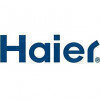Filter interviews by
HP India Senior Financial Analyst Interview Questions and Answers
HP India Senior Financial Analyst Interview Experiences
1 interview found
I appeared for an interview in May 2025, where I was asked the following questions.
- Q1. How do the balance sheet and the income statement differ from each other? What does each of them tell about a company's financial position
- Ans.
The balance sheet shows a company's assets, liabilities, and equity, while the income statement details revenues and expenses over time.
Balance Sheet: Snapshot of financial position at a specific date, e.g., total assets of $1M.
Income Statement: Reports financial performance over a period, e.g., revenue of $500K and expenses of $300K.
Balance Sheet Components: Assets (what the company owns), Liabilities (what it owes), ...
- Q2. What is a each flow statement? Whey is it important for assessing a company's liquidity and cash management
- Ans.
A cash flow statement tracks cash inflows and outflows, crucial for evaluating liquidity and cash management.
It consists of three sections: operating, investing, and financing activities.
Operating activities show cash generated from core business operations, e.g., cash received from customers.
Investing activities reflect cash used for investments, e.g., purchasing equipment or selling assets.
Financing activities indica...
- Q3. In which case is nagative cash flow not bad news
- Ans.
Negative cash flow can indicate growth opportunities or strategic investments rather than financial distress.
Investment in growth: A startup may have negative cash flow while investing heavily in product development.
Seasonal businesses: A retail company may experience negative cash flow during off-peak seasons but expects profits during peak times.
Acquisition costs: A company may incur negative cash flow while acquirin...
- Q4. What would you deduce from soaring accounts receivable
- Ans.
Soaring accounts receivable may indicate potential cash flow issues or credit risk in a business.
Increased sales on credit: A rise in accounts receivable could suggest that the company is selling more on credit, which may lead to cash flow problems if customers delay payments.
Customer credit risk: A significant increase might indicate that the company is extending credit to less reliable customers, increasing the risk ...
- Q5. What is AR factoring?
- Ans.
AR factoring is a financial transaction where a business sells its accounts receivable to a third party for immediate cash.
Improves cash flow by converting receivables into cash quickly.
The third party, known as a factor, typically charges a fee or discount.
Example: A company sells $100,000 in receivables to a factor for $90,000.
Factors may also handle collections and credit risk assessment.
Commonly used by small busin...
- Q6. What is the difference between liquidity and solvency?
- Ans.
Liquidity refers to short-term asset availability, while solvency indicates long-term financial stability.
Liquidity measures a company's ability to meet short-term obligations, e.g., cash and cash equivalents.
Solvency assesses a company's ability to meet long-term debts, e.g., total assets vs. total liabilities.
A company can be liquid but not solvent, e.g., having cash but high long-term debt.
Conversely, a company can ...
- Q7. What is EBITDA important ? What does a positive EBITDA Out nagative net income indicate?
- Ans.
EBITDA measures a company's operational performance, indicating profitability before interest, taxes, depreciation, and amortization.
EBITDA stands for Earnings Before Interest, Taxes, Depreciation, and Amortization, providing a clear view of operational profitability.
A positive EBITDA indicates that a company is generating enough earnings from its core operations to cover its operating expenses.
Negative net income with...
- Q8. What does a very high current ratio suggest to you about a company?
- Ans.
A very high current ratio indicates strong liquidity but may suggest inefficiency in asset utilization.
A current ratio above 2:1 may indicate that the company has more than twice its current liabilities covered by current assets.
While high liquidity is generally positive, it may also suggest that the company is not effectively using its assets to generate revenue.
For example, a company with a current ratio of 5:1 may b...
- Q9. Is a very high ROE of a company a good sign what would you suggest as a financial analyst in this case?
- Q10. What do you know about dupont analysis?
- Ans.
DuPont analysis is a financial performance framework that breaks down return on equity into its components.
It decomposes ROE into three components: profit margin, asset turnover, and financial leverage.
For example, a company with a 10% profit margin, 1.5 asset turnover, and 2 financial leverage has an ROE of 30%.
This analysis helps identify strengths and weaknesses in a company's financial performance.
It allows for com...
- Q11. What does a high P/E ratio indicate to you as a financial analyst?
- Ans.
A high P/E ratio suggests that investors expect future growth, but it may also indicate overvaluation.
Indicates high investor expectations for future earnings growth.
Can suggest that a stock is overvalued compared to its earnings.
Example: A tech company with a P/E of 50 may be seen as having strong growth potential.
May reflect a market trend where investors are willing to pay more for perceived growth.
Interview Preparation Tips
Top trending discussions






Interview questions from similar companies

I applied via Naukri.com and was interviewed in May 2021. There were 2 interview rounds.

(1 Question)
- Q1. Tell me about yourself ?
Interview Preparation Tips

They would ask you to discuss a common tech issue
They would again provide more tech scenarios to solve
Interview Preparation Tips

(1 Question)
- Q1. What is cap rate
- Ans.
Cap rate, or capitalization rate, is a measure used to evaluate the potential return on investment for a real estate property.
Cap rate is calculated by dividing the property's net operating income (NOI) by its current market value.
It is expressed as a percentage and is used by investors to compare different investment opportunities.
A higher cap rate indicates a higher potential return, but may also come with higher ris...


(1 Question)
- Q1. General & Experience
(1 Question)
- Q1. Professional Experience & some technical questions (SAP)

I applied via Naukri.com and was interviewed in May 2024. There was 1 interview round.
(2 Questions)
- Q1. Self intro. Asked related to previous exp.
- Q2. Salary expectation
Interview Preparation Tips
- Confident with your previous rol
Realy nice company.

Software Engineer Interview Questions & Answers
Samsung Researchposted on 2 Dec 2016
I applied via Campus Placement and was interviewed in Dec 2016. There were 5 interview rounds.
Interview Questionnaire
1 Question
- Q1. Basic question on my inclination of work, and my family background.
Interview Preparation Tips
Experience: There was a np complete problem given. Brute force solution worked
Duration: 3 hours
Total Questions: 1
College Name: IIT Madras

I appeared for an interview in Jun 2016.
Interview Preparation Tips
Experience: We had to code in the given duration. The question was a simple dynamic programming one. But the catch was that we could test our solution only a given number of times.
Tips: Make sure you're strong in your coding basics and have enough self confidence.
Duration: 3 hours
Total Questions: 1
Round: Technical Interview
Experience: The tech round was basically on the resume. There were a few questions about the projects I had done.
Tips: Know about everything you've written in your resume. Don't write anything that you're not very sure of.
Round: HR Interview
Experience: Questions were about my work and achievements in college and future plans.
Tips: Talk freely and don't be nervous. Don't reveal any future study plans to the HR!
College Name: Nitk surathkal

I appeared for an interview in Aug 2017.
Interview Preparation Tips
Experience: 20 English questions
Rest of the 40 were quant.
There was a severe shortage of time in this test. English was a piece of cake but the rest of the questions were pretty time consuming.
Tips: Its better to finish those questions first which aren't time consuming.
Duration: 1 hour
Total Questions: 60
Round: Test
Experience: There was one three mark question and two five mark questions.
The three marker was either on linked list or array sorting.
The second question was based on dynamic programming.
The third question was on algorithms and number theory. Eg. My question was to find the units digit in a^b.
You could code in C,C++, Java or C#
Duration: 1 hour 10 minutes
Total Questions: 3
Round: Group Discussion
Experience: It wasn't exactly a group discussion. It was more of extempore. We were given ten minutes to note down points on the topic and each of us had to speak for two minutes. And then at the end there was a brief discussion on the arguments.
Tips: Don't start making philosophical arguments. You are expected to give technical arguments and reasons.
Don't contradict yourself ever. Make your stand on the topic clear and stick to it.
Don't cut off people in the middle. Hear them out.
It's not about who is speaking the most. It's about who is most effective.
Duration: 1 hour
College Name: IIT Madras

Interview Questionnaire
4 Questions
- Q1. Mtech Thesis-based
- Q2. Speech Recognition/ Signal Processing
- Q3. Introductory questions
- Q4. Don’t you think you should go for MBA than job after your graduation because it increases your salary package by leaps and bounds?
- Ans.
Choosing between an MBA and a job post-graduation depends on career goals, financial implications, and industry demands.
An MBA can lead to higher salary potential, especially in management roles. For example, MBA graduates often earn 20-30% more than their peers.
Immediate work experience can provide practical skills and networking opportunities that an MBA may not offer right away.
Consider the industry: tech companies ...
Interview Preparation Tips
Experience: Initial criterion for shortlisting is of CPI(>7).
Round: Test
Experience: There were two written tests: Technical and Aptitude. This year technical test was not organized due to some reasons. In technical for Bangalore Center questions were based on C language and data structures.
Duration: 60+60 minutes
Total Questions: 50+50
Round: Technical Interview
Experience: Panel of 1 person and lasted 10-15 minutes.
Round: HR Interview
Experience: Panel of 1 person and lasted for 10 minutes.
General Tips: • Improve your aptitude skills
• Try to solve puzzles ( Shakuntala Devi maths puzzles )
Skills: Speech Signal Processing , Image Processing , Statistical Signal Processing , Mathematical methods in Signal Processing
College Name: IIT- Kanpur
HP India Interview FAQs
Some of the top questions asked at the HP India Senior Financial Analyst interview -
Tell us how to improve this page.
HP India Interviews By Designations
- HP India Software Developer Interview Questions
- HP India Technical Support Engineer Interview Questions
- HP India Software Engineer Interview Questions
- HP India Intern Interview Questions
- HP India Technician Interview Questions
- HP India Data Analyst Interview Questions
- HP India Financial Analyst Interview Questions
- HP India Business Analyst Interview Questions
- Show more
Interview Questions for Popular Designations
- Business Analyst Interview Questions
- Senior Associate Interview Questions
- Senior Executive Interview Questions
- Senior Analyst Interview Questions
- Senior Manager Interview Questions
- Financial Analyst Interview Questions
- Research Analyst Interview Questions
- Associate Analyst Interview Questions
- Show more
Overall Interview Experience Rating
based on 1 interview experience
Difficulty level
Duration
Interview Questions from Similar Companies
HP India Senior Financial Analyst Reviews and Ratings
based on 6 reviews
Rating in categories
|
Technical Support Engineer
220
salaries
| ₹2.4 L/yr - ₹6.3 L/yr |
|
Software Engineer
131
salaries
| ₹8 L/yr - ₹15 L/yr |
|
Software Developer
89
salaries
| ₹10.8 L/yr - ₹18.5 L/yr |
|
Financial Analyst
81
salaries
| ₹5.8 L/yr - ₹13.8 L/yr |
|
Area Sales Manager
69
salaries
| ₹4.5 L/yr - ₹15.8 L/yr |

OPPO

LG Electronics

Bajaj Electricals

Voltas
- Home >
- Interviews >
- HP India Interview Questions












